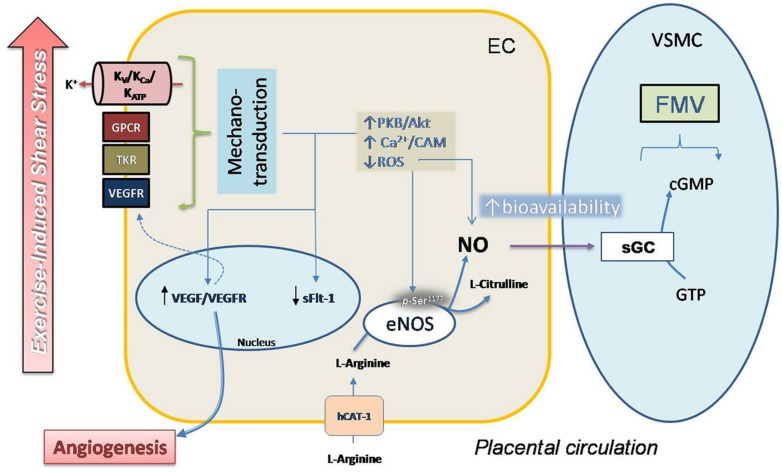FIGURE 1.
Proposal model for regulation of FMV in placental vasculature in response to exercise. Moderate exercise during pregnancy could improve the placental vascular response to shear stress in a mechanism that involves mechano-transduction induced by extracellular signals by a complex mechanism that includes activity of voltage (Kv), ATP (KATP) and KCa, GPCRs, tyrosine-kinase receptors (TKRs) and VEGFR. Activation of this mechanism induces a signaling pathway that causes high phosphorylation (p-Ser1177) and activity in eNOS mediated by Ca2+/calmodulin (Ca2+/CAM) and protein kinase B (PKB/Akt). Decreased synthesis as well as reduced accumulation of ROS contributes to improve the bioavailability of NO. Activity of eNOS involves activity of hCAT-1, a protein co-expressed with cav-1 in caveolae (not shown), which is essential for NO synthesis. Diffusion of NO to smooth muscle cell (SMC) induces the activation of sGC and vascular smooth muscle relaxation.

